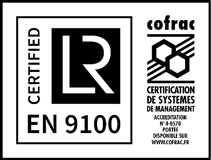The landscape of logistics is evolving rapidly alongside seismic shifts in technology.
Customer expectations for fast and reliable deliveries climb higher every year.
A startling statistic reveals that nearly 61% of consumers are willing to pay more for same-day delivery, underscoring the critical nature of delivery efficiency in the current market.
We understand these changing dynamics and offer tailored solutions to enhance your delivery efficiency, ensuring you stay ahead in this competitive industry.
Reflecting on Peak Season: A Review of Delivery Efficiency in Logistics
While actual numbers may vary between countries, a look back over the past seven years shows global parcel volume has surged 150%, from 64 billion parcels in 2016 to 161 billion in 2022.
This steady growth in demand, often spiking during the holiday season and the sustained rise in e-commerce, has put the spotlight on the robustness and adaptability of delivery networks.
Evaluating Delivery Performance
In evaluating how logistics companies fared, a key metric to consider is the on-time delivery rate. Despite the increased volume, leading carriers managed to maintain an impressive on-time delivery rate of around 95%, a testament to the effectiveness of their delivery efficiency strategies.
However, this success was not universal, as some smaller operators struggled, with rates dipping to around 80-85%. This disparity highlights the varying levels of preparedness and the critical role of efficient delivery systems in handling peak demand.
The Cost Implications of Peak Season
Another crucial aspect is the cost impact of the peak season on logistics operations. The increased demand often leads to higher operating costs, with companies spending more on additional labour, transportation, and warehousing.
Interestingly, despite these increased costs, companies investing in advanced delivery efficiency software and optimisation tools reported better cost control, demonstrating the direct correlation between technological investment and operational cost efficiency.
Lessons Learned and Looking Forward
Reflecting on the recent peak season provides valuable insights into the strengths and weaknesses of current logistics models.
It becomes evident that investment in technology, particularly in delivery efficiency software, is not just beneficial but essential for coping with the demands of peak seasons.
As we look towards future peak periods, these lessons form the cornerstone for continuous improvement in delivery efficiency, ensuring that logistics companies are better prepared to meet the challenges and opportunities that lie ahead.
The Role of Delivery Efficiency Software
Here is where delivery efficiency software becomes indispensable. Such software streamlines operations, reduces manual errors, and ensures a smoother flow of goods.
By automating critical processes, it allows businesses of all sizes to handle increased volumes without compromising on speed or accuracy.
Why Is Delivery Efficiency Important?
- Meeting and Exceeding Customer Expectations:
In our fast-paced world, customers expect quick and reliable delivery services. In fact, 87% of online shoppers identified shipping speed as a key factor in their decision to shop with an e-commerce brand again. Therefore, maintaining high delivery efficiency is crucial for building customer trust and loyalty, directly impacting repeat business and overall satisfaction. - Economic and Operational Impact:
Efficient delivery processes are directly linked to cost savings. By optimising routes, reducing fuel consumption, and minimising delivery times, companies can significantly lower their operational costs. Additionally, increased efficiency leads to fewer delivery errors, reducing the need for costly returns and exchanges. This not only improves the bottom line but also enhances the brand reputation. - Competitive Advantage in the Market:
In a market where numerous companies offer similar products and services, delivery efficiency can be a major differentiator. Companies that ensure faster and more reliable deliveries often have a competitive edge, attracting more customers and capturing a larger market share. In essence, delivery efficiency becomes a powerful tool for staying ahead in the fiercely competitive logistics landscape. - Sustainability and Environmental Responsibility:
With growing concerns about environmental sustainability, efficient delivery practices play a significant role in reducing carbon footprints. Optimised delivery routes and schedules mean fewer trips, which translates to less fuel consumption and lower emissions. Companies committed to sustainable practices through improved delivery efficiency not only contribute positively to the environment but also resonate with environmentally conscious consumers. - Adaptability to Market Changes and Challenges:
The logistics industry is dynamic, with frequent changes and challenges such as fluctuating demand, traffic conditions, and even global events like pandemics. High delivery efficiency allows companies to be more adaptable and responsive to these changes, ensuring uninterrupted service even in unpredictable circumstances. This adaptability is crucial for maintaining service quality and meeting customer expectations consistently.
How Do You Calculate Delivery Efficiency?
Calculating delivery efficiency is a multifaceted process that involves assessing various key performance indicators (KPIs).
Here are some practical insights into how businesses can effectively measure their delivery efficiency:
Delivery Time Measurement
This is the most straightforward metric, involving the calculation of the time taken from the moment an order is placed to when it is delivered to the customer.
Monitoring average delivery times, especially during peak and off-peak periods, provides valuable insights into the efficiency of your delivery process.
A significant increase in delivery times during peak periods may indicate the need for better resource allocation or process optimisation.
On-Time Delivery Rate
Calculate the percentage of deliveries that arrive on schedule. This is done by dividing the number of on-time deliveries by the total number of deliveries made in a given period.
An on-time delivery rate of 95% or higher is typically considered excellent in most industries.
This metric is crucial for customer satisfaction and retention, as consistent delays can significantly impact customer trust.
Cost Per Delivery
This involves calculating the total cost associated with each delivery. It includes fuel, vehicle maintenance, driver wages, and any other direct expenses.
By reducing the cost per delivery, companies can improve their profitability while maintaining or even enhancing service quality.
Comparing cost per delivery over time can also highlight areas where efficiencies can be gained, such as route optimisation or vehicle maintenance schedules.
Delivery Accuracy
This metric measures the rate at which orders are delivered correctly and without damage.
It’s calculated by dividing the number of error-free deliveries by the total number of deliveries.
High delivery accuracy not only enhances customer satisfaction but also reduces the costs associated with returns and replacements.
Capacity Utilisation
This involves assessing how effectively a company uses its delivery resources, such as vehicles and personnel.
It can be measured by comparing the volume of goods delivered against the total delivery capacity.
Optimising capacity utilisation can lead to significant improvements in delivery efficiency, as it ensures that resources are not being underutilised or overstretched.
Customer Feedback and Satisfaction Scores
While not a traditional quantitative metric, customer feedback on delivery services can provide invaluable qualitative insights into delivery efficiency.
Regularly gathering and analysing customer feedback helps identify areas for improvement and ensures that the delivery services meet or exceed customer expectations.
In practice, combining these various metrics gives a comprehensive picture of delivery efficiency.
Leveraging technology, like delivery efficiency software, can automate much of this data collection and analysis, providing real-time insights and highlighting areas for improvement.
This data-driven approach is essential for businesses looking to optimise their delivery processes and maintain a competitive edge in the logistics industry.
How to Improve Delivery Efficiency
Improving delivery efficiency is crucial for any logistics operation looking to stay competitive and meet customer expectations. Here’s how Metafour’s courier software can be instrumental in this process:
- Automated Route Planning and Optimisation:
Metafour’s courier software features advanced route planning capabilities. It uses algorithms to determine the most efficient routes, taking into account variables like traffic, delivery windows, and vehicle capacity. This optimisation not only saves time but also reduces fuel consumption and wear and tear on vehicles. - Real-Time Tracking and Updates:
The software provides real-time tracking of deliveries, enabling both the logistics company and the customers to monitor the progress of their orders. This transparency increases customer satisfaction and allows for better management of the delivery process, including making adjustments in real-time as needed. - Enhanced Data Analysis and Reporting:
With Metafour’s software, businesses can easily analyse key performance indicators related to delivery efficiency, such as delivery times, on-time delivery rates, and cost per delivery. This data is crucial for identifying areas of improvement and making informed decisions to enhance efficiency. - Improved Communication Channels:
The software facilitates better communication between dispatchers, drivers, and customers. Efficient communication minimises misunderstandings and delays, ensuring that the delivery process runs smoothly. - Automated Customer Notifications:
Customers are automatically notified about their delivery status, reducing the need for them to contact customer service. This not only enhances the customer experience but also frees up resources to focus on other aspects of the delivery process. - Scalability for Peak Times:
Metafour’s courier software is designed to scale according to the business needs, especially during peak seasons. This scalability ensures that businesses can handle increased demand without a drop in delivery efficiency. - Customisation and Flexibility:
The software can be customised to fit the specific needs of different logistics operations. Whether integrating with existing systems or configuring unique delivery processes, Metafour’s software offers the flexibility needed to optimise delivery efficiency. - Reduced Paperwork and Manual Errors:
By digitising the delivery process, the software significantly reduces paperwork, which not only saves time but also minimises the chances of manual errors that can lead to delivery inefficiencies.
Elevating Your Logistics Game with Metafour
As we reflect on the past peak season and look ahead, it’s clear that delivery efficiency is pivotal in shaping the success of logistics operations.
Whether you’re grappling with calculating delivery efficiency or seeking ways to enhance it, Metafour offers the tools and expertise you need.
Discover how our courier software can transform your logistics operations and elevate your delivery efficiency. Contact our team for more information.





